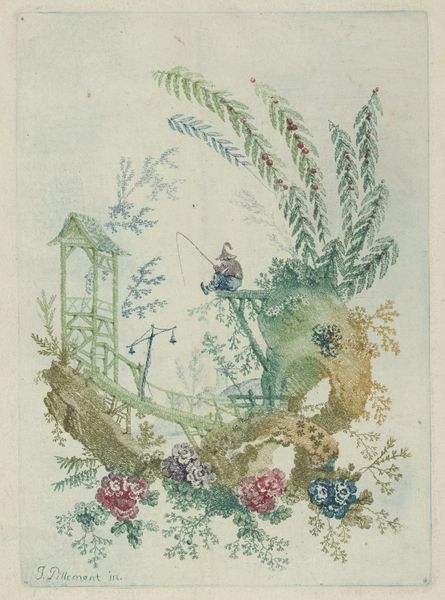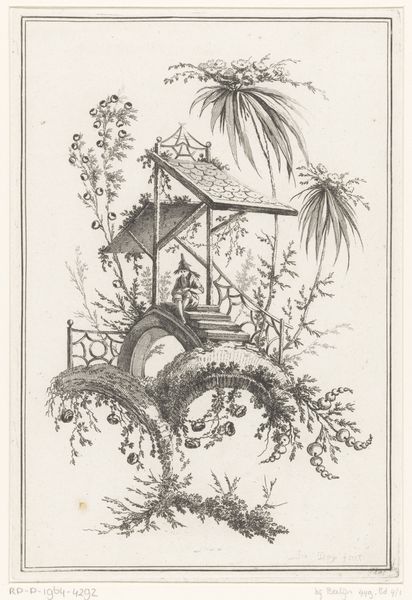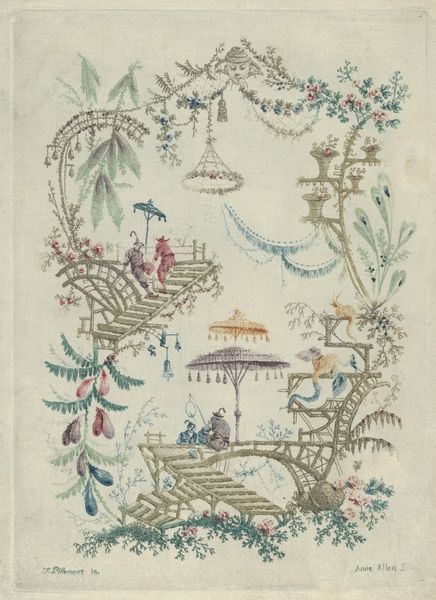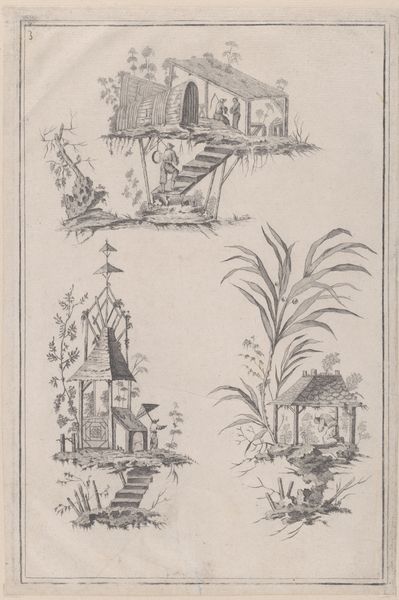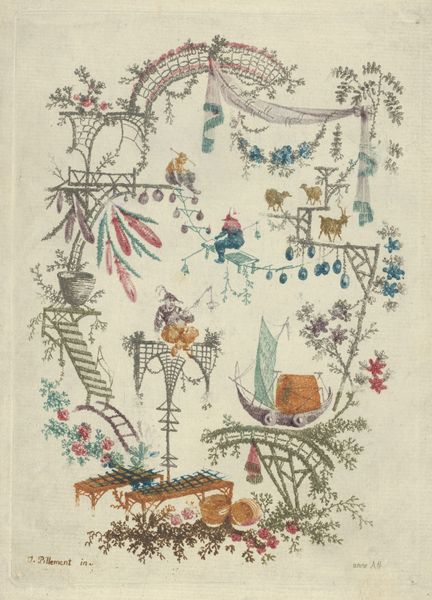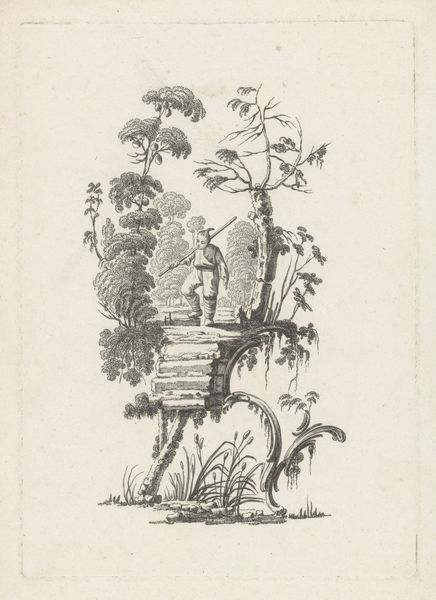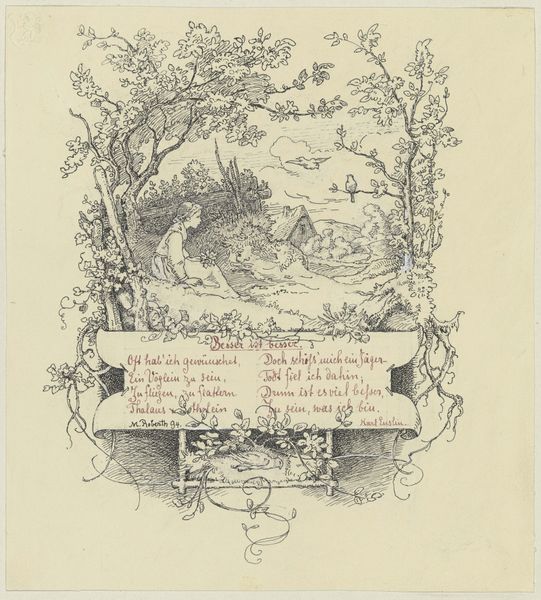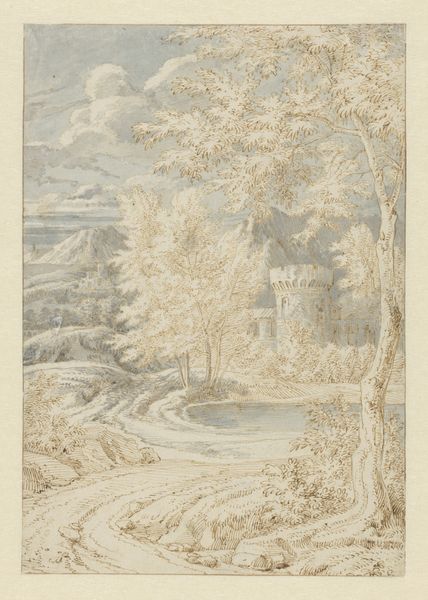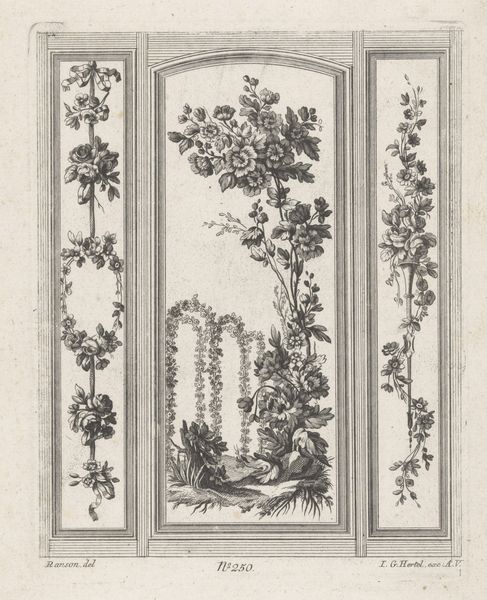
Chinoiserie from Nouvelle Suite de Cahiers de Dessins Chinois 1790s
0:00
0:00
Dimensions: Plate: 7 11/16 × 5 1/2 in. (19.6 × 14 cm) Sheet: 6 7/16 in. (16.4 cm)
Copyright: Public Domain
Jean Pillement made this print, Chinoiserie, in France in the 18th century. It uses etching to playfully represent Chinese aesthetics, reflecting Europe’s fascination with East Asia during that time. The image blends European Rococo style with imagined Chinese motifs. The asymmetrical composition, delicate lines, and pastel colors are typical of Rococo, while the figures in vaguely Asian clothing, the pagoda-like structure, and the exotic plants represent a European fantasy of China. This Chinoiserie style was particularly popular among the French aristocracy, who used such images to decorate their homes. Pillement's print reveals more about European tastes and projections than about actual Chinese culture. The print's existence says a lot about the social conditions that shape artistic production. It invites us to consider how cultural exchange is always mediated through power dynamics. Art historians use a wide range of resources to understand such images, from period texts and design manuals to studies of trade and colonialism. It is these contexts that give the artwork its full meaning.
Comments
No comments
Be the first to comment and join the conversation on the ultimate creative platform.
